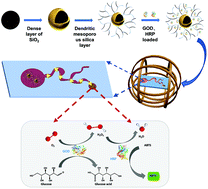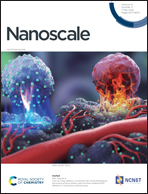Honeycomb-like active microswarms for magnetically tunable cascade enzyme catalysis†
Abstract
There has been great interest in magnetic-field-tunable catalytic performance because it can be physically controlled. However, there have been few reports describing the effects of the controllability of the magnetic field on cascade enzyme catalytic performance considering the collective behaviors of nanocatalysts. Herein, a magnetic honeycomb-like active microswarm (HAMS) was proposed for magnetically tunable cascade enzyme catalysis. The programmable control of HAMSs into ribbon or vortex patterns was conducted under a 3D magnetic field. By tuning the swarm patterns, the profile of the magnetic field significantly influenced the cascade enzyme catalytic performance. Furthermore, HAMSs were steered to a targeted site in complex microchannel networks, where they subsequently induced cascade enzyme catalysis at the localized region under 3D magnetic control. The magnetically tunable catalytic process described here shows a deep understanding of the relationship between the collective behaviors of the magnetic swarm and the enhanced enzyme catalytic performance. Targeted enzyme catalysis utilizing HAMSs under magnetic control holds great potential for use in advanced enzyme catalysis, biomedicine, and microfluidics.



 Please wait while we load your content...
Please wait while we load your content...